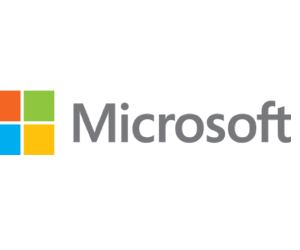EDTECH: What is Copilot?
JOHNSON: Microsoft Copilot is an AI assistant, powered by advanced AI models like GPT-4 and DALL-E 3, and you can use it on the web at no cost. However, Microsoft is investing in a lot of different language models, both large and small, so over time you will see the inclusion of different language models into our Copilot offerings.
Then, there is Copilot for Microsoft 365, integrated with the apps you use every day, so everyone from administrators to staff can combine the power of the models with their organizational data. We also offer GitHub Copilot, which can be used organization wide to elevate developer workflows.
EDTECH: How are K–12 students using AI?
JOHNSON: Our latest research showed students are finding that AI tools are great for brainstorming or thinking through research questions. So, we see students using it as more of a tutor. A great example would be a student putting a multiple-choice question in and not just asking for the right answer but why a particular answer is correct, and the others are wrong.
We also see a lot of computer science educators using GitHub Copilot, which we offer for free to teachers and students ages 13 and up. There is a full, professional-grade GitHub and GitHub Copilot for students, and that can help them focus on solving bigger problems and building better software. This is a professional platform that gets students ready for college and a career in computer science.
DISCOVER: Schools can incorporate literacy tools in STEM subjects.
EDTECH: Data protection is especially important in K–12, where student data privacy is a high priority today. Tell us more about data protection with Copilot.
JOHNSON: Copilot is built upon the infrastructure of business enterprise. So, the same classifications of data security, privacy and data structures that you get for a Fortune 100 company, you can get for any size or type of school.
However, the more robust Copilot offerings come with data protection. With Copilot, your data is your data; it is not used to train AI models, and there are also copyright protections. So, if educators or students are using it within the boundaries of our license agreement, we offer a copyright protection.
EDTECH: What is the most common reason that K–12 teachers say they use Microsoft’s AI tools?
JOHNSON: The first use case we usually see of Copilot is teachers using it to save time, especially with lesson planning. I had a master teacher friend of mine in my kitchen in October, and she's a technology expert, but she hasn't been playing with AI. She was with her daughter-in-law, who is also an experienced teacher, who told me about a chemistry lesson they wrote the day before. She said they spent six hours developing a lesson plan.
I showed her Copilot, and in three minutes, she had a better lesson plan than what they had spent hours doing the day before.
DIVE DEEPER: Teachers can use AI to boost productivity.
EDTECH: How can school administrators use Microsoft Copilot?
JOHNSON: We often see school leaders using it to help with writing, brainstorming and planning. Recently, one of our internal leaders used Copilot to help write a job description. The tool literally took a higher-level job that we had a job posting for and rewrote it for a lower career position. This is something that school administrators can benefit from as it can save them a lot of time.
EDTECH: We often hear about how teachers and student use AI, but not very much about IT teams. How can IT teams use the tool?
JOHNSON: We have seen some exciting advancements in using AI for cybersecurity. We are starting to see more IT teams adopt Microsoft Copilot for Security and use that to keep their IT infrastructure safe and secure.
There are a lot of benefits to that because a lot of school districts don't have CISOs. Some have their normal IT staff taking on or splitting security tasks. However, with Copilot, it can be incredibly helpful to use natural language AI to reason over security issues. Copilot can tell IT about upcoming risks in the school network and what to do about those risks.
LEARN MORE: Education IT leaders are optimistic about cybersecurity.
EDTECH: Does this mean that Copilot could be a huge player in alleviating staffing challenges for K–12 IT teams?
JOHNSON: Every organization in the world is trying to use AI to gain efficiencies and improve upon practice. For IT teams that are stretched thin and may have a hard time hiring support staff, the tool can offer great relief in improving their workflows.
Copilot can do a range of things, from writing tech specs to writing and reviewing any application development within the IT shop or using Copilot for Security to help manage the school’s security position across its infrastructure.
IT leaders may need somebody to triage the tickets that are coming into the help desk. Copilot can decide whether to send a ticket to a high-level technician or a lower-level technician — or just answer a customer’s urgent question itself using a frequently asked questions document.
EDTECH: What if schools want a more personalized tool based on AI?
Johnson: We have some districts that want to build their own Copilots, and they can use Azure AI Studio — a Platform as a Service tool — to help. We see a lot of schools that use it for facilities management. They use it to track or manage break/fix tickets and get a lot of efficiency there. We do have a couple of school systems, such as New York City Public Schools, that have created an AI tutor for their students.














